Consumer sentiment is a popular topic when a company, investment, or economy is being evaluated. How much does it matter when reviewing something’s financial state? Are there certain additional factors? In this episode we explore all of that and more!
Summary – Cents of Security Podcasts Ep. 89
The following is a summary of a live audio recording and may contain errors in spelling or grammar. Although IBKR has edited for clarity no material changes have been made.
Cassidy Clement
Welcome back to the Cents of Security podcast. I’m Cassidy Clement, Senior Manager of SEO and Content at Interactive Brokers, and today I’m your host for the podcast. Our guest is Steve Sosnick, Chief Strategist at Interactive Brokers.
Consumer sentiment is a very popular topic when we look at a company, an investment, or even the economy. So how much does it matter when reviewing someone’s financial state? Are there additional factors to consider? In this episode, we’re going to discuss all of that and more. Welcome back to the program, Steve.
Steve Sosnick
Hey, Cassidy, great to see you again.
Cassidy Clement
You write about this almost every business day on Traders’ Insight, covering how consumer sentiment impacts the market and the different ups and downs we see. It’s a hot topic nowadays. There’s so much uncertainty around what the market is going to do each day—it doesn’t feel like the same thing, different day, as it did for a while.
So what exactly is consumer sentiment, and why are we hearing so much about it lately?
Steve Sosnick
This has been on my mind for the last few months. There are various consumer sentiment measures, and two of the more popular ones come from the University of Michigan and the Conference Board. The University of Michigan numbers come out every two weeks, while the Conference Board releases theirs once a month.
About six weeks ago, I started noticing what I saw as a bit of a problem in the University of Michigan numbers. Consumer sentiment had been dipping, but inflationary expectations suddenly spiked. Among the questions they ask are general sentiment and expectations, but they also ask about one-year and five-year inflation expectations.
Out of nowhere, one-year inflation expectations jumped from 3.3% to about 4.3%, which was unexpected. Normally, those numbers can be a bit volatile, but they almost always move in tandem with gas prices at the pump. However, gas prices hadn’t changed enough to justify that spike. So, I took that as a bit of a weird yellow flag.
Then, the next set of Michigan numbers came out, followed by the Conference Board data, and both were well below economists’ expectations—they were surprisingly bad. It’s tough to draw definitive conclusions from it, but based on what I gathered from the people who compile these numbers, it appears that tariff fears were affecting inflationary concerns. I think the uncertainty brought about by tariffs and potential policy changes in the new administration sent consumer sentiment reeling.
Let me put it another way: These surveys tell you what people intend to do, but it’s also important to look at what people are actually doing. It’s one thing to say, I’m going to lose 15 pounds this year—I say that every year. But the real question is: Do I buy another box of cookies or not?
What we also saw around the same time was a sharp decline in retail sales—government-reported retail sales numbers plunged unexpectedly. So not only had sentiment changed, but consumer activity changed as well. A few days later, Walmart issued a warning about its future guidance. Forget what the government is saying, forget what independent surveys are saying—if Walmart is telling you that customers are not spending as freely as before, that is about as strong an indication as you can get. That’s when concerns about consumer sentiment really came to the forefront.
Cassidy Clement
When we think about consumer sentiment as a metric, it usually reflects how optimistic the general public feels. That optimism—or lack thereof—can stem from actual spending habits, economic output, or public policies. Are these policies scaring people into saving more, or are they brushing it off and continuing to spend?
You mentioned Michigan earlier as one of the sources that put out an actual number for this metric. How is consumer sentiment usually measured?
Steve Sosnick
It’s based on survey data, and I have to admit, I’m not an expert in the exact methodology behind the Michigan index. The most recent Michigan sentiment number was 63.1, down from 64.7. The next reading is expected to be 63.1.
I’m not entirely sure how those numbers are calculated, but as with most market-related things, I think John Maynard Keynes said it best: The objective of investors is not to pick the winner of a beauty contest, but to predict who the market will think the winner is.
So in this case, it’s less about knowing exactly how they arrive at 64.7. What matters is that if the number drops to 63.1, that’s worse than before. If it comes in below or above expectations, that’s considered a negative or positive surprise, respectively.
Other numbers, like inflationary expectations, are more straightforward. For example, the most recent one-year inflation expectation reading was 4.3%. That means survey respondents expect prices to be 4.3% higher on average one year from now.
Cassidy Clement
When we talk about market movements alongside consumer sentiment, there are many elements that come into play—employment, inflation, interest rates, wage growth. These factors often get discussed together.
Why is that? Do they correlate in a specific way, or is it more that they’re all part of the consumer experience? After all, wages impact how much people spend, inflation affects purchasing power, and so on.
Steve Sosnick
I think, to some extent—and this is not meant as a cop-out—a little bit of all of that because it’s very complicated. Anyone who’s listening, or I’ll ask you the question: what influences your mood? A lot of things. Yeah, it’s how you feel about your job. Are your friends, your neighbors, your contacts—how are they feeling about their jobs? How much are things costing you?
That’s why I said the inflationary expectations tend to follow the price of gasoline because it’s something that everybody—assuming you don’t drive an electric car—but if you drive an internal combustion car, like most people still do, you have to fill up your tank periodically, and you know if that’s getting more or less expensive.
And unlike most other prices, as you drive down the road, the price of gasoline stares you in the face, right? It’s $3.19 at this station. It’s $2.97 at this station, blah, blah, blah. So you have a sense of that.
So that’s why that number is correlated. But in a general sense, it is all those things.
It’s, you know, how do you feel about your own job prospects? Are you hearing of layoffs amongst your friends or relatives or other contacts? That affects things.
The stock—there is some reflexivity with the stock market. Are stocks doing well? Then people feel better. There’s what’s called—there’s a well-known thing called the wealth effect. And quite frankly, when stocks are going up, people feel wealthier.
Other stuff could also just be an individual consumer. Did you have a bad day at work? Did your spouse yell at you? That kind of thing. Those are the other parts of sentiment, but obviously, those get—those fall in the wash when you survey enough people. But these are the real drivers.
And the thing that’s very important, and the reason I find it really crucial, is that consumer spending is about two-thirds of the economy. And so, if consumers are fairly rosy-minded, that will help GDP, that will help the economy, and that has multiplier effects. You spend money—if you spend money at one business, then those people have more money to spend somewhere else, etc., etc.
A very basic economic equation that people should just know—this is from economics. Let’s see if you remember your Econ 101, Cassidy:
GDP = C + I + G + NX
And the C is for consumer. The I is for investment. The G is for government. And NX is net exports—exports minus imports.
So if C is really two-thirds of the equation, anything that makes C go up and down is going to have a fairly profound impact on the rest of the equation.
But again, these are not things in isolation.
One of the things where it’s believed that Doge is having an effect is the stated intent of the Doge program is to reduce the size of G. Now, it’s one thing to reduce the size of G, so that will probably have some negative effects on GDP when those numbers come out.
But what it also means is, in the meantime, by doing it via a lot of layoffs—not all federal government jobs are in Washington. Federal government jobs are everywhere. And so, remember what I said about: Are you hearing about your neighbors losing their jobs or something of that nature?
So if these job cuts—they’re not huge across the board, and they may not show up. They didn’t show up in unemployment numbers in the last reading yet, and it’s not clear that they’re going to show up in a meaningful way.
But what it does mean is, if you are hearing overall about a lot of people with solid, good jobs that they’ve been relying upon—dispersed around the country—and they’re losing them, that has a negative impact on consumer sentiment.
And then, the drawdown in G also has an effect on C. And we can argue whether the tariffs are going to produce enough of NX to offset that, but again, in the short term, that’s not helping consumer sentiment.
So you’re getting the drawdown in C before we really see any effects on the NX part of the equation.
So it’s a fairly simple mathematical equation, but it’s got very profound effects on the economy.
Cassidy Clement
You brought up such a great point. I have been in many conversations where I’d love to pull out the whiteboard and go over that one.
Because they all rely on each other. They’re all pillars within this pavilion that makes up this one item, like you said, GDP. And if C is two-thirds of the whole, but it’s impacted by G, and then if NX is impacted by tariffs, which then can impact I, your entire formula can be completely derailed from any other trend that you’ve had.
And I think you led me perfectly into my next question, which is: we see consumer sentiment impact a company or a sector pretty directly.
Something easy is, okay, back in the day, people would go to Blockbuster and rent videos. And that was such a big deal. That was your Friday—you go out, grab a bag of gummy worms, get your video, go home, and watch it.
As sentiment changed and users said, Why would I be doing that?—first, it was Netflix by mail, if you recall those days, and now, I’m streaming things. I don’t need to go buy physical copies.
Their sentiment toward that sector, or that company, or that business model was: I don’t really need that anymore.
So it changed. It impacted people’s jobs. It impacted those companies.
But when we look at it from a broader perspective, how does consumer sentiment impact the economy as a whole? And I know there are many historical examples, but if you could give one—or maybe a hypothetical—for our listeners, I think it would be really advantageous because we’re currently in an economic state where people have all types of opinions, but the market is acting very unsure.
That’s why I harped on the Walmart example before, because Walmart and Amazon are almost a duopoly here.
But Walmart is probably a bit more of a constructive example because almost everybody turns up at Walmart at some point.
And one of the things that Walmart talks about, right?—is a lot of times when there’s an initial slowdown in the economy, they benefit.
And you may say, Why? Because—Wait a minute. People can’t spend more money if the economy’s slowing down.
Here’s the thing: If unemployment goes from 4% to 5%, that’s terrible in this environment right now. But what it still means is 95% of the people who want jobs have them.
So it still means those people have to spend money, but they’re going to spend a little less. They may not be buying—they may switch to house brands as opposed to national brands.
While consumer staples tend to do well—because ultimately, you still need products from Colgate-Palmolive and Procter & Gamble—their ability to pass on price increases, their share of the market, might decrease a little bit. It may spill back on them, so people might be buying the Walmart house brand.
Another thing they talk about sometimes is that higher-income consumers—when things get a little rocky—they turn up at Walmart more than they might when things are going well.
So what you can have—what ends up happening—is that they’ll mention that, We got a higher percent… things are a little dodgy out there.
Steve Sosnick
So we got a higher percentage of six-figure income shoppers this month or this quarter because those people are becoming a little more value-oriented. You know what? We’ve been going to Target. It’s a little bit nicer store, but the prices tend to be a little bit better at Walmart, so let’s go there instead.
These are just micro—these are a lot of little micro interactions. But I’ve just thrown out some pretty important companies in this whole discussion. Or, you know, you get to Walmart, and it’s a family with kids, and the kids have the gimmes.
And you know, if you have a little extra income in your pockets and you’re feeling good, you’re more likely to say yes than if you’re truly strapped and have to say no.
And so, these are all the different things. These are all the very subtle ways that consumer sentiment plays in.
Are you going to buy? Are you going to shop for a new house? If you’re feeling tenuous about your job, are you going to shop for a new car? If you’re feeling tenuous about your job or interest rates or just that prices are going up?
And the car payment that I thought I could afford last month might not seem as affordable this month. There are a zillion different decisions that we all make in any given day.
And first and foremost, it depends on your direct prospects for income and things of that nature. But a secondary factor is just, I don’t know. I’m feeling a little nervous. Maybe now is not the time to make a major purchase. Maybe we can get another couple of months out of this old washing machine rather than buying a new one. That kind of thing.
Cassidy Clement
Yeah, that’s definitely—I think a common phrase that I’m hearing in my life and also throughout the news is a lot of people saying, I’ve got to make things work for longer than I expected.
Whether it’s the car, the lawnmower—now that it’s starting to get nicer out on the East Coast—things of that nature. The big purchases are getting pushed back a little bit until people have a little more certainty.
But when we’re talking about consumer sentiment and uncertainty, and people saying, I have financial goals I still want to attain—some people may be close to retirement, and some people may just be starting full-time employment.
What are some things to keep in mind when you’re utilizing consumer sentiment as part of your financial strategy? Because someone might say, It’s consumer sentiment. How much does it actually matter when my financial goal is X many years down the road?
Steve Sosnick
Again, this is more of the short term. Over time, it’s very difficult to bet against American companies. It’s very difficult to bet against the American consumer.
We’ve shown—through hell or high water—that we’re going to go spend money if we can. And a lot of times, if we feel something, honestly—you’ve heard the term retail therapy.
There are people who spend money even when they probably shouldn’t.
So these are the types of considerations. It’s not necessarily—this is more, I would say, from a market’s point of view, a short- to mid-term type of thing.
If Kimberly-Clark has a bad quarter because people switched from the upscale toilet paper to the more generic toilet paper, that’s not necessarily going to affect your investments over the next 20 years.
It’s going to affect you if you own that specific stock this quarter. That’s a different problem.
But it’s also important to know, from a personal point of view, that there’s a market for everything out there.
So, perhaps if you’re in a good financial situation but you feel that consumer sentiment is getting a little weaker, maybe you do want to hold off on buying that car. Because the car dealers—there might be specials, there might be sales on that car, a $2,000 rebate next month or two months from now, because they’re not moving off the lots.
So this is the way you utilize it.
This is actually where personal finance intersects with the markets.
But I think it’s much more important to always keep your personal finances first and the market impacts second in this situation.
On the other hand, it can give insights into where the market might go and trends therein.
By the way, one thing I didn’t mention when I was talking about consumer sentiment numbers—very unusually, and this is very much a product of our times—they reflected political leanings.
So, prior to the election, Republicans polled worse than Democrats, and Independents were in the middle.
After the election, and certainly once a lot of the tariff talk came into play, those numbers more or less reversed.
So, Republicans feel much better about the economy, and Democrats feel much worse.
The problem is, Independents—who were even-keeled before—have tended to start moving with the Democrats a little bit.
Meaning that while there was a political effect in the numbers, it’s also affecting people who may or may not view life through a political lens.
Cassidy Clement
Yeah, it’s important to always remember that when you are looking at any type of economic metric, you don’t want to look at it in a vacuum or in isolation because there are several different caveats.
And then there’s also the idea of—let’s say—anomalies or major changes.
An election is a good example. A natural disaster is another one. A global pandemic is another.
There are so many elements that can create an immediate pivot.
When we’re actually going through readings or new numbers that get published, there are so many other data points out there that you can look at to try to make sense of these trends.
Before we close this out, is there anything from your perspective that you can say: Down the line, I’m going to be looking at consumer sentiment in terms of X over the next couple of months?
As we’re recording this in mid-March, the market has a lot of uncertainty.
Steve Sosnick
Interestingly—and I wrote a piece about this recently—mid-March can be a very weird, auspicious time for markets.
That was literally the peak of the internet bubble.
As we’re taping this, I think it’s literally five years to the day from when the COVID pandemic was declared and the markets bottomed.
They plunged around this time, and then a couple of weeks later, they started to find the bottom when the Fed came in at full blast.
Two years ago, around this time, was the Silicon Valley banking crisis.
The piece was called Beware the Ides of March because it’s just—I don’t know.
That’s a whole other podcast about statistical oddities like that.
But in terms of what I’m looking for going forward—does the consumer continue to get worse?
Does it stabilize? Does it stabilize at lower levels? And does it start to turn around?
I think right now, considering the mood—as we’re taping this—the mood in the stock market is pretty miserable.
I think a lot of people are getting nervous about that.
And at least for those who have the resources and have been investing—which I believe is a good piece of our audience—there’s probably some angst among that, which is not helping sentiment.
All things being equal, with the markets down 10%, presumably, you’re 10% less wealthy on paper.
Let me just say that very carefully—on paper.
…than you were. And while that shouldn’t necessarily—especially if you’re looking at retirement accounts—it shouldn’t necessarily change your opinion… it does. It’s human nature.
And we have no clarity yet about tariffs and how they might affect prices. So I’m going to be looking very carefully at these numbers and listening to what some of the retailers are saying about what consumers are doing.
I think you watch—as I mentioned—the Michigan numbers, the consumer confidence numbers from the Conference Board, and the retail sales report from the Bureau of Labor Statistics. And listen to what Walmart, Target, Amazon, and some of these others are saying about customers.
Yesterday—again, we’re taping this March 12th—there was some bad news out of Dick’s Sporting Goods and Kohl’s. Those may be a bit more niche companies. Kohl’s has its own issues, and with Dick’s Sporting Goods, you know what? You’re still going to buy shin guards for the kids.
Again, you’re going to buy shin guards for the kids to play soccer or a baseball mitt this time of year—that’s one of the last things you’re going to give up. But maybe you don’t buy a new pair. Maybe you don’t buy a new set of golf clubs. That kind of thing.
So these are all discretionary items, and you have to listen for the clues from consumer goods companies.
Also, although I’m not a huge fan of over-listening to bank earnings—and we’re about a month away from those—listen to what they say about consumers when they start to talk about it.
Are they seeing more delinquencies? Are people having problems paying back their car loans? Are they seeing credit card spending go up faster than incomes?
Because if that’s the case, it means people are going into debt to do their shopping.
These are the little things you should be looking for.
Again, I wouldn’t necessarily make long-term decisions based on any one of these numbers. But in terms of having a sense of the short to medium term—about where the economy is going—if you have a good sense of where the consumer is going, you have a good sense of where two-thirds of the economy is going.
Cassidy Clement
Yeah, since that makes up such a large part of the spending aspect, I know that gets to be a concern.
Before we wrap up, I just have a question to tie this with a bow. I know this is such a larger discussion, but as we are entering mid-March, there have been a lot of layoffs from the federal government and private companies.
How exactly would that impact consumer sentiment and our economic output if, in a way, our job market starts to become a little bit more flooded?
I’m just interested in how a lot of these companies are reacting.
Because when we’ve woken up the past week or so, it’s been consistent red with the keywords layoffs and tariffs in most of the headlines.
And I know that can spook people in terms of consumer sentiment, but I’m just curious how that works economically—because this is probably the first time in my lifetime that I’ve seen it at this scale.
Steve Sosnick
Well, there’s an old saying:
The definition of a recession is when your friend or neighbor loses their job. The definition of a depression is when you lose yours.
And that’s an important thing. If you’re hearing that the job market isn’t good, well, you may tighten up because you get nervous about your own job prospects.
You get nervous about your prospects for a raise or a bonus. You get nervous about your ability to just maintain your lifestyle.
So it’s natural for people to pull back.
And I think because human beings rely a lot on anecdotal evidence and view the world around them, it’s just human nature.
If you start hearing, Oh, Jane down the street worked for the federal government for the last 22 years, and then all of a sudden, she cleaned out her desk one afternoon, does it affect your life directly? No.
Does it affect your sentiment? Probably.
And so this is where it becomes a bit difficult to deal with.
And that’s why I harped—not harped, but wanted to bring up—the distinction between survey data, which is a lot about vibes, and the actual spending data, which reflects what’s really going on.
Sometimes the two don’t necessarily follow each other.
In this case, lately—at least last month, last quarter—they have.
Which makes me a little more… which made me a little more concerned.
And I hope we’ll link some of the stuff I’ve written in here, but this started to concern me a couple of months ago, about a month or two ago.
So that’s really the issue.
Yes, you can break it down into economics and say, Okay, if X number of people lose their jobs, that’s X number of dollars removed from spending, and go through the C and the I and the G to see how it all impacts things.
But in terms of where sentiment comes in, it’s just based on all the things we listen to and react to on a daily basis.
And this is where it’s a collection of 350 million people’s individual experiences and attitudes operating collectively.
That’s a pretty difficult thing to model.
Cassidy Clement
Yeah, the element of psychology and behavioral finance is probably the most important ancillary factor here to consumer sentiment because that plays such a big role.
But you brought up some awesome points today. Thanks for joining us, Steve.
Steve Sosnick
Yeah, thanks for having me.
Cassidy Clement
So, as always, listeners can learn more about an array of financial topics for free at interactivebrokers.com/campus.
Follow us on your favorite podcast network, and feel free to leave us a rating and review.
Thanks for listening, everyone!
Disclosure: Interactive Brokers
The analysis in this material is provided for information only and is not and should not be construed as an offer to sell or the solicitation of an offer to buy any security. To the extent that this material discusses general market activity, industry or sector trends or other broad-based economic or political conditions, it should not be construed as research or investment advice. To the extent that it includes references to specific securities, commodities, currencies, or other instruments, those references do not constitute a recommendation by IBKR to buy, sell or hold such investments. This material does not and is not intended to take into account the particular financial conditions, investment objectives or requirements of individual customers. Before acting on this material, you should consider whether it is suitable for your particular circumstances and, as necessary, seek professional advice.
The views and opinions expressed herein are those of the author and do not necessarily reflect the views of Interactive Brokers, its affiliates, or its employees.

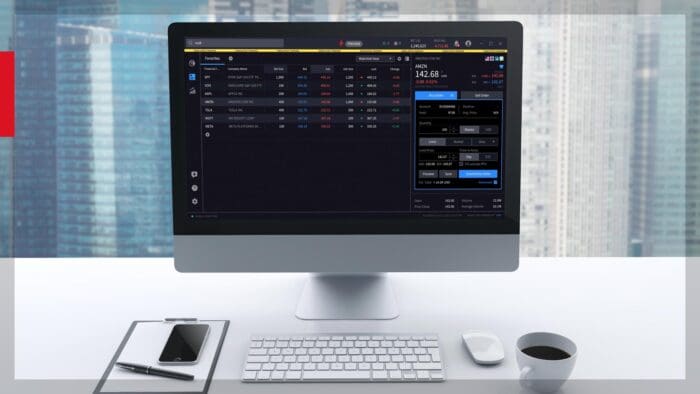
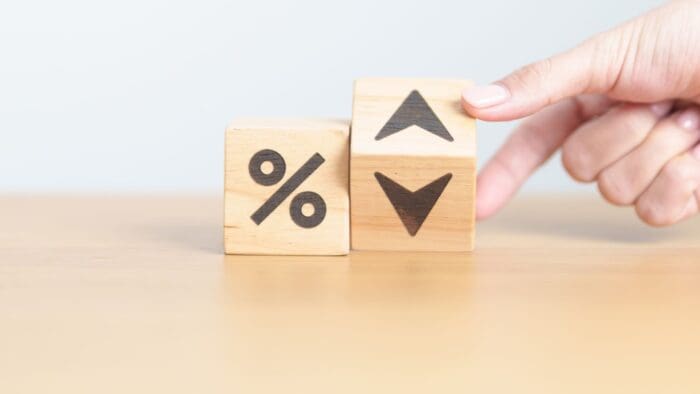

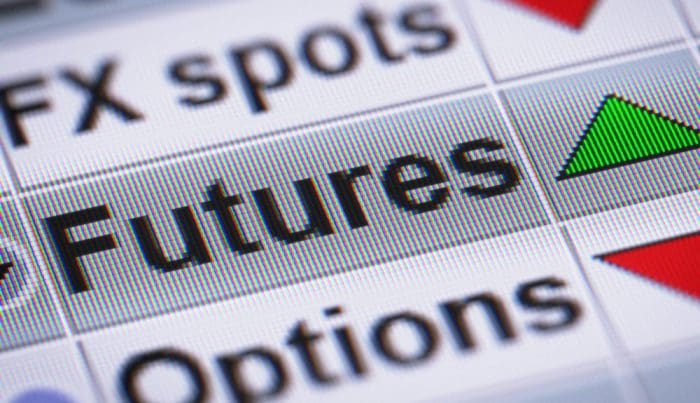






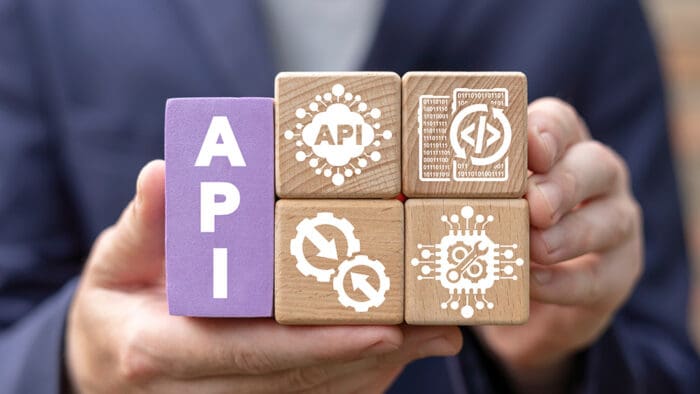

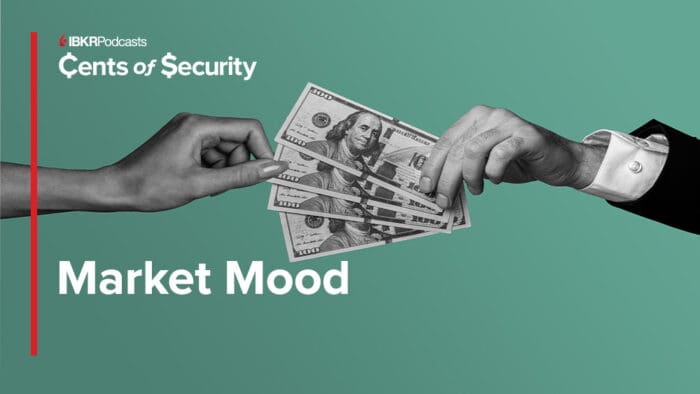


Join The Conversation
For specific platform feedback and suggestions, please submit it directly to our team using these instructions.
If you have an account-specific question or concern, please reach out to Client Services.
We encourage you to look through our FAQs before posting. Your question may already be covered!